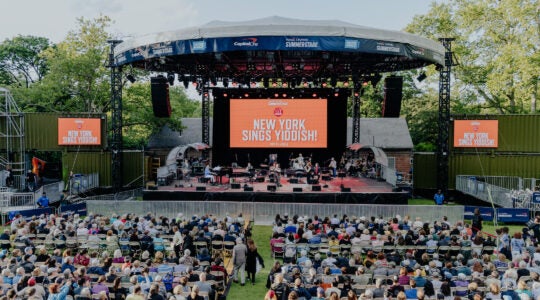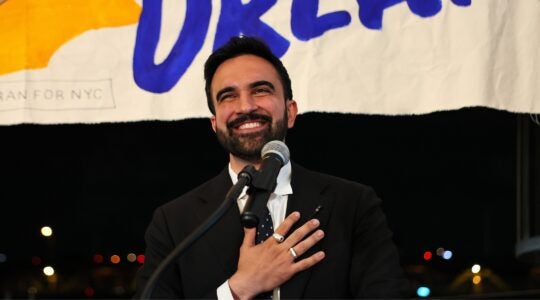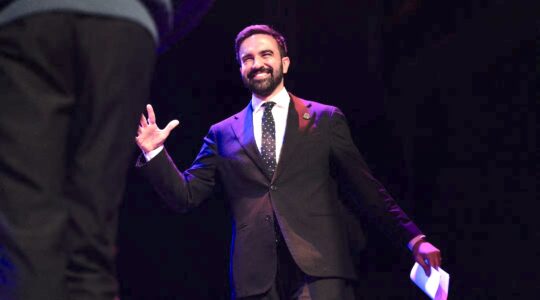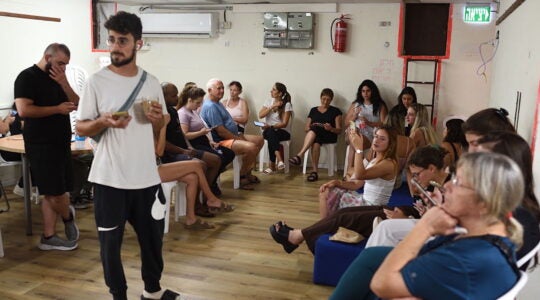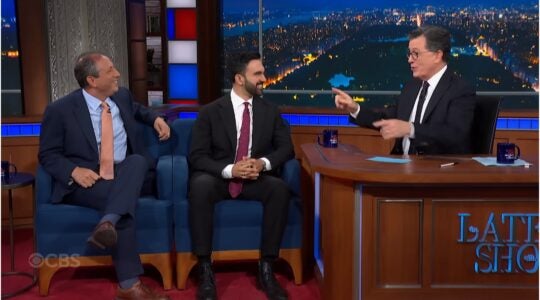First came the Shema. Douglas Rubin would recite it in the morning. Then, the Shemona Esrei, the heart of the Jewish prayer service that Rubin said before going to work.
Finally, he started to put on tallit and tefillin.Slowly, over a three-year period, Rubin, a 47-year-old investment banker and self-described "modern, liberal Jew" from Westchester, made Shacharit (the entire morning prayer service) part of his daily regimen.
After a 30-year hiatus.
Rubin, like many Jews of his generation, left Judaism after his bar mitzvah.
"I came from a typical Long Island family of the ’50s and ’60s," he says, sitting in his Wall Street office. No kashrut or Shabbat observance at home. Public school education. Twice-a-week Talmud Torah classes. "I remember having a passing acquaintance with Hebrew. I remember learning not much of the prayer service."
At 13 came his pro forma bar mitzvah. For the next three decades, Rubin hardly set foot in a synagogue, besides mandatory chapel at his prep school "to satisfy an academic obligation," and the occasional High Holy Days service to please his parents. "Four, five hours a year if I was lucky."
"I had no connection with Judaism," Rubin says.
Douglas Rubin is a pseudonym. He agreed to discuss the spiritual path that took him from nonbeliever to "authentic Jewish believer" on the condition that his real name not be used.
"It’s not because I am embarrassed: I am very excited about where I am," he says. "It seems to be egotistical to put my name" in the newspaper.
Rubin represents what the non-Orthodox denominations say they are trying to produce: a committed Jew who, while not strictly bound by halacha, makes lifestyle choices based on a serious investigation of Jewish sources and tradition.
Thin, with a full head of dark hair, he looks young for his age. Bareheaded, Rubin pulls from his briefcase the ArtScroll siddur and the Torah with Rashi’s commentary that accompany him to work each day.
Home is the Westchester suburb of Pleasantville, where he and his wife (they now have three children) moved 14 years ago. Rubin joined a synagogue in a nearby town ("You have to join a synagogue") but rarely went.
A friend in Pleasantville, which had no Jewish house of worship, called three years ago. A group of Jews were forming a synagogue, buying a former church building.
The Pleasantville Community Synagogue, which now has 120 member families, is unaffiliated, with mixed seating, a Conservative prayerbook and a kosher kitchen.
Rubin made a donation to the synagogue but didn’t go. Until one Purim. It was his first real foot-stomping, Megillah-reading Purim. "I had never seen anything like it. It was moving. There was somehow an authentic text behind it. I felt very comfortable," he says.
Rubin started attending Shabbat services, led at first by lay members of the congregation with "a lot of Carlebach melodies."
Rabbi Marc Sameth became the synagogue’s spiritual leader, and during an introductory Judaism class asked his students, most with backgrounds like Rubin’s, if they could fully understand any topic they had stopped learning about at 13.
"It was a question I couldn’t disagree with," Rubin says. He started reading Heschel and Buber and Steinsaltz. He took a course on biblical Hebrew at the New York Kollel, sponsored by the Hebrew Union College-Jewish Institute of Religion. "I really wanted to understand what I was praying."
At the kollel, Rubin "saw how a line of prayer can have a lot more depth than it has on the surface. It was as if this whole door" (a door of Jewish tefila) "had opened."
"There’s more to Jewish life," he thought, "than services on the Shabbat."
He started to pray, "sporadically," on weekday mornings. "At some point I realized I had to do it every day, not necessarily because halachically I’m required to, but because it gives me a direction every day."
Rubin took his bar mitzvah tallit out of its velvet bag, received his grandfather’s set of tefillin and started to use them. "I had been davening every morning without any equipment," he says.
For a year Rubin has prayed the entire morning service, facing east to Jerusalem, with "a little kipa I keep in the tallis bag," in the light of a small lamp, seated in a chair in his bedroom. He gets up at 5 a.m., 45 minutes early. "It’s hard getting up in the morning," he admits. "That’s 45 minutes [less] of sleep."
"It’s an absolutely essential part of my life now," he adds. "I feel like I’m connected to God every day."
Sometimes he will dwell on one prayer or a single phrase. "There are things in the prayer that set my direction for the day," Rubin says.
Sometimes he sees himself reflected in the words. "I will read the prayer as a metaphor for what is happening to me." Sometimes he will repeat a phrase and find that it keeps returning to him during the day. "It’s a reminder of my relation to God," he says.
Rubin studies the weekly Torah portion on the MetroNorth ride to Manhattan. "I don’t work on the train," he says. "By the time I walk off the train I’m feeling really good. When I walk off the train I really see God in everyone around me."
Over the last few years Rubin has dipped his toes in the Reform, Reconstructionist, Conservative, Orthodox and chasidic waters: a service here, a class there. "I’m not part of any movement," he says. "I don’t have any prejudices against any of the movements. I feel comfortable in most of the settings."
At home Rubin now eats only kosher food but uses non-kosher utensils. His wife, who grew up in a more-observant household but became disillusioned by women’s traditional role in the synagogue, does not want to kasher the kitchen. "Shalom bayis" (peace in the home) "is much more important to me than anything else," he says.
Rubin walks to shul for Shabbat services, davens mincha at home Saturday afternoon. Eventually, he says, he might add mincha and maariv to his daily schedule.
"I would like to be able to daven three times a day," he says.
The New York Jewish Week brings you the stories behind the headlines, keeping you connected to Jewish life in New York. Help sustain the reporting you trust by donating today.
